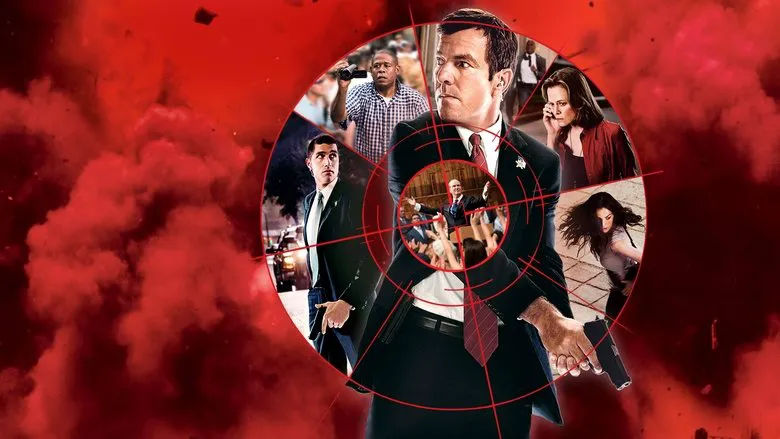Unraveling the Labyrinth of Truth: A Deep Dive into “Vantage Point”
Introduction
“Vantage Point” emerges as a compelling political thriller, thrusting the audience into a maelstrom of suspense surrounding a high-profile assassination attempt in Salamanca, Spain. What truly distinguishes this film is its ingenious narrative design, presenting a singular, explosive event from a kaleidoscope of perspectives. Each character serves as a unique lens, progressively unveiling a dense network of conspiracy, political machinations, international terrorism, betrayal, and the ever-present spectre of revenge, all lurking just beneath the surface of the initial incident.
The film’s brilliance lies in its sophisticated use of flashbacks, iterative sequences, and the constant shifting between subjective viewpoints to meticulously build suspense. This keeps the audience perpetually guessing, challenging them to piece together the fragmented truth from the divergent accounts, creating a truly immersive and engaging experience.
Delving into the Characters
President Ashton: Beyond the Political Persona
President Henry Ashton, the central figure in this intricate drama, represents the United States on the world stage, advocating for a groundbreaking anti-terrorism alliance. However, as the narrative unfolds, Ashton is revealed to be far more than just a political figurehead. He is depicted as a complex individual, a leader who is also a husband and a father, grappling with his own personal vulnerabilities. The direct threat to his life humanizes him, forcing viewers to confront the human cost often concealed behind political power.
Agent Barnes: Haunted by Guilt, Driven by Truth
Agent Thomas Barnes, the President’s dedicated and unwavering bodyguard, occupies another pivotal role. Burdened by the crushing weight of his perceived failure to prevent the assassination attempt, Barnes embarks on a relentless and desperate pursuit of truth and retribution. His determined investigation relentlessly peels back the layers of the conspiracy, ultimately leading him down a twisting path where moral lines become increasingly blurred.
Complex Supporting Roles: Weaving the Grand Narrative Tapestry
“Vantage Point” boasts an array of compelling supporting characters, each meticulously woven into the complicated fabric of the plot. Figures such as Dr. Angela Morgan, whose specialized knowledge proves unexpectedly critical, and Howard Lewis, the seemingly ordinary tourist whose keen observation skills become vital, contribute essential pieces to the puzzle. Each character is imbued with distinct backgrounds and motivations, adding layers of depth and complexity to the unfolding narrative.
Narrative Structure: A Complex Puzzle
“Vantage Point” truly shines in its pioneering use of multi-perspective storytelling, delivering a single, pivotal event through the eyes of a diverse cast of characters. Each unique viewpoint unveils fresh details, discarded clues, and crucial subtleties, challenging the audience and allowing them to slowly decode the central mystery.
Beyond simply recounting events, the skillful utilization of flashbacks and precisely timed repetition serves a vital function by revealing previously concealed details and sustaining viewer engagement throughout. This narrative technique, intertwined with the characters’ profound emotional journeys throughout, facilitates deeper investigation into the nuances of human nature, especially examining the treacherous moral terrain that individuals must navigate during times of crisis, high pressure and extreme uncertainty.
Themes and Symbolism: Echoes of a Turbulent World
“Vantage Point” delves into a host of weighty and globally relevant themes, from the delicate and often conflicted relationship spanning counter-terrorism efforts and intricate international politics. It stresses concepts of collaboration, the essential demand for unified response in combatting terror and its many forms. Underscoring the crucial importance of cooperation on a global scale to effectively combat terrorism, the film also implicitly addresses events and tragedies of unparalleled magnitude (such as the 9/11 attacks) which has led for a complete change in international relations.
Through its stark depiction of terrorist acts and the characters’ intense inner turmoil, “Vantage Point” grapples with the ever-present threat of terrorism, the profound ethical quandaries it engenders, and the morally ambiguous territory where lines separating retaliation from true justice are heavily blurred.
Symbolism subtly permeates the narrative with recurring motifs–prominently featuring the American flag, which serves as a call for patriotism. In contrast, the use of doves evokes ideals of peace, harmony, and reconciliation. Moreover, impactful imagery of explosions is an act to denounce abhorrence of terrorism.
Visual and Auditory Impact: Amplifying Tension
The movie’s captivating immersive appeal is greatly reinforced or intensified. Through meticulously curated sets, groundbreaking implementation of cutting-edge advancements and technology along with cinematographic composition enhances every moment to be experienced rather than simply shown; each scene perfectly set with scores that heighten tension within complex scenes allowing intense depth to surface on cue!
Visually stunning and painstakingly created special effects bring realistic explosions to life, showcasing the destructive power and chaos with visceral clarity. The use of the camera, expertly employed to draw the audience deeply into each moment coupled with particular visual techniques amplify palpable emotions expressed across actors conveying true expressions in challenging circumstances. The soundtrack flawlessly synchronizes, amplifying tension; the deep, intensive musical depths give heightened feel bringing to focus how truly intense many critical moments are.
Conclusion: A Riveting Exploration of Truth and Deception
“Vantage Point” is a thoroughly gripping that stands out remarkably for thought provoking themes as a political thriller coupled remarkable sound and visuals for overall engagement.
By emphasizing on techniques of many-perspective story elements like flashbacks or through utilizing Repetition brings about this tangible feeling and creates intrigue around themes; it provides deep reflective analysis intertwined themes within political contexts especially those addressing those challenging interactions involving anti- terrorism policies highlighting complex relationships of our blurred lines with justice/ morality/ ethics.